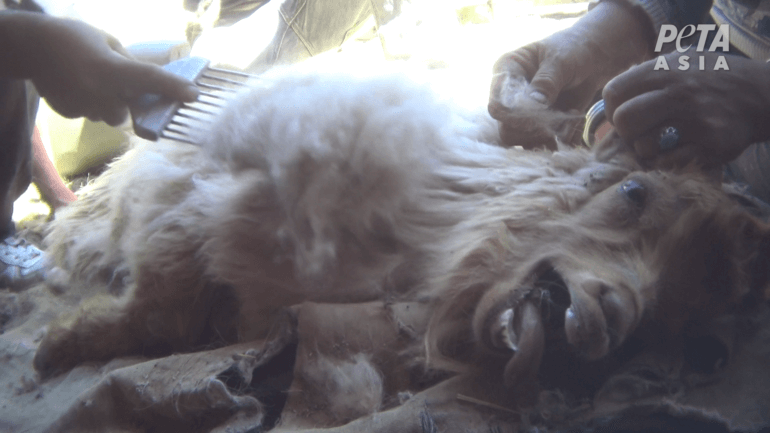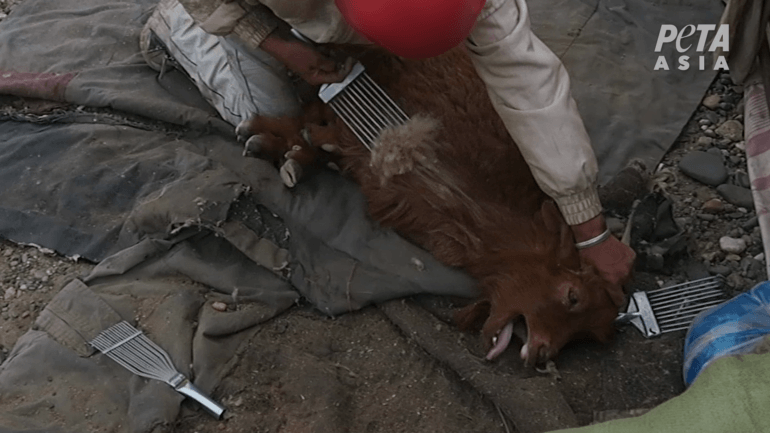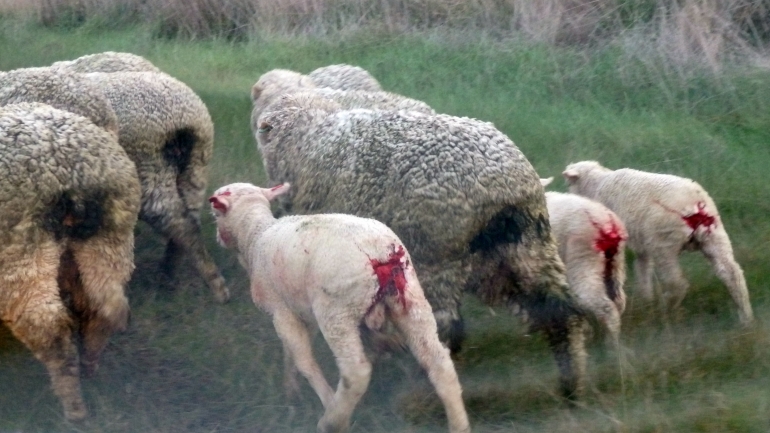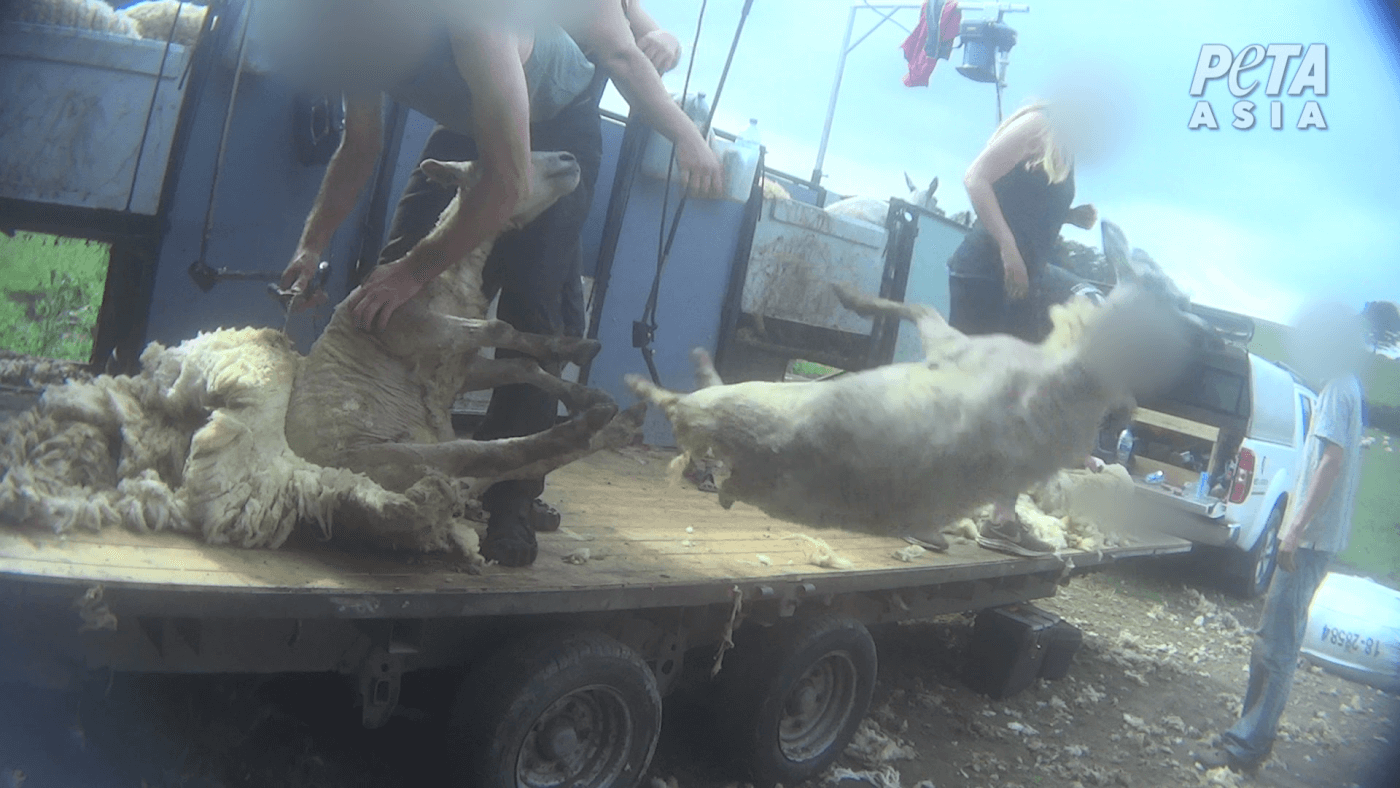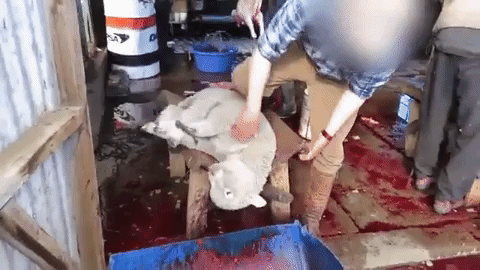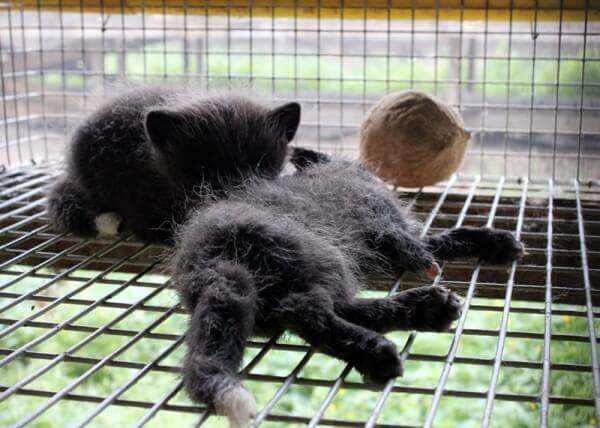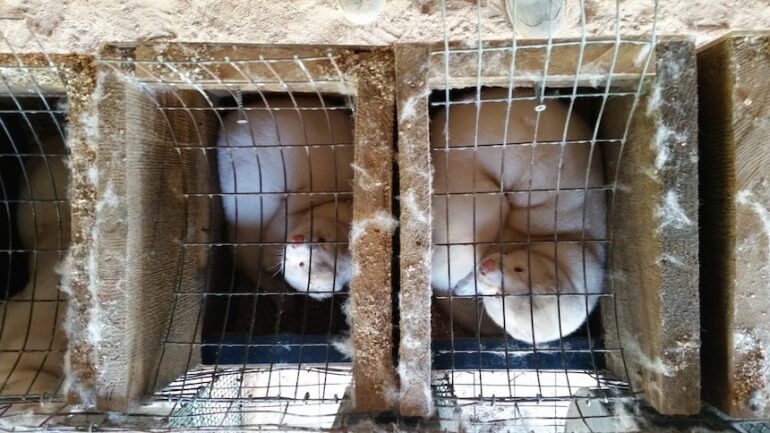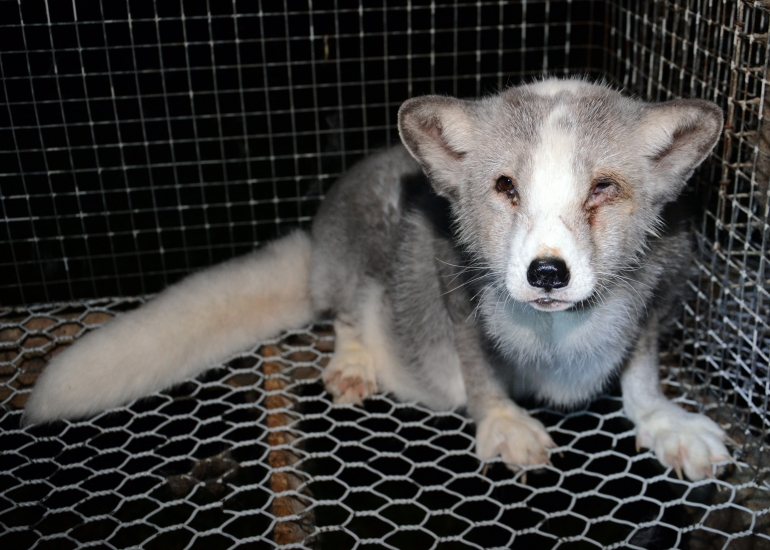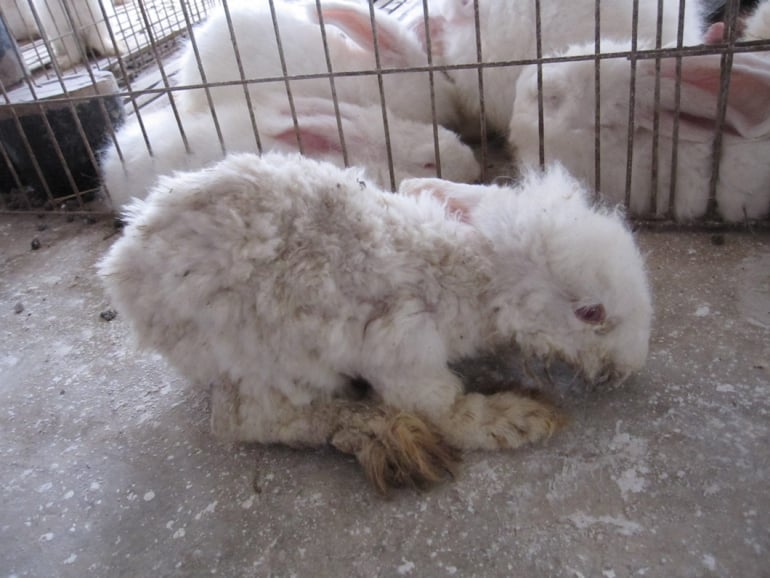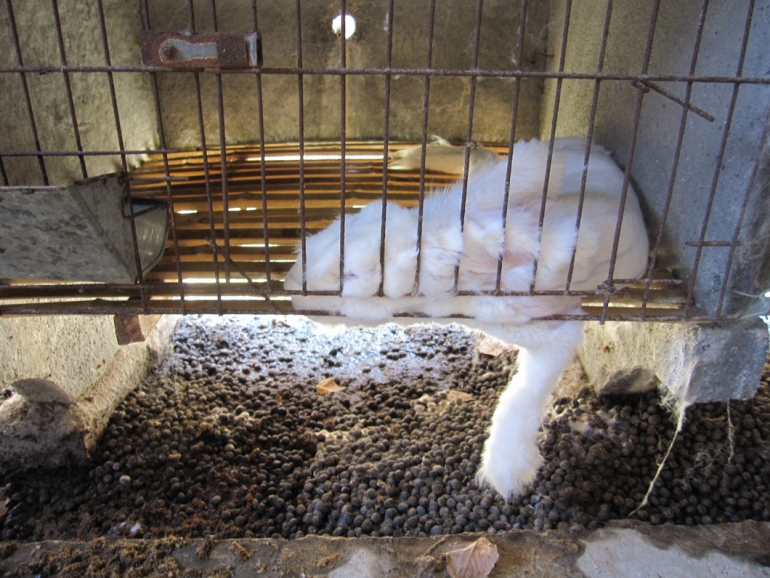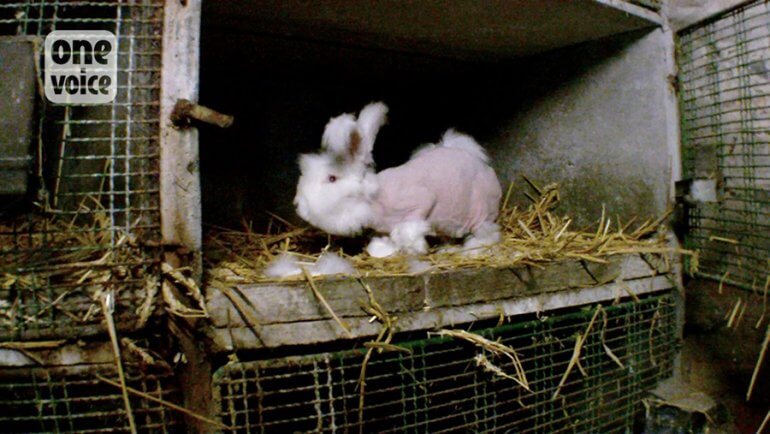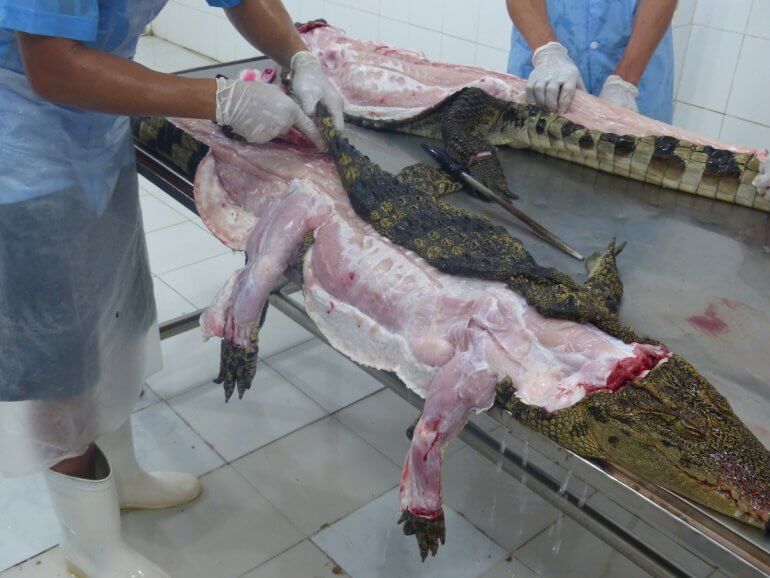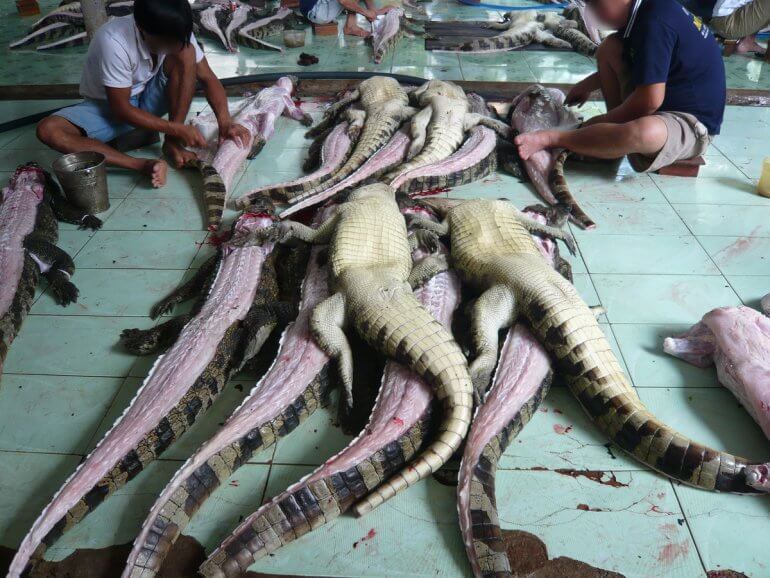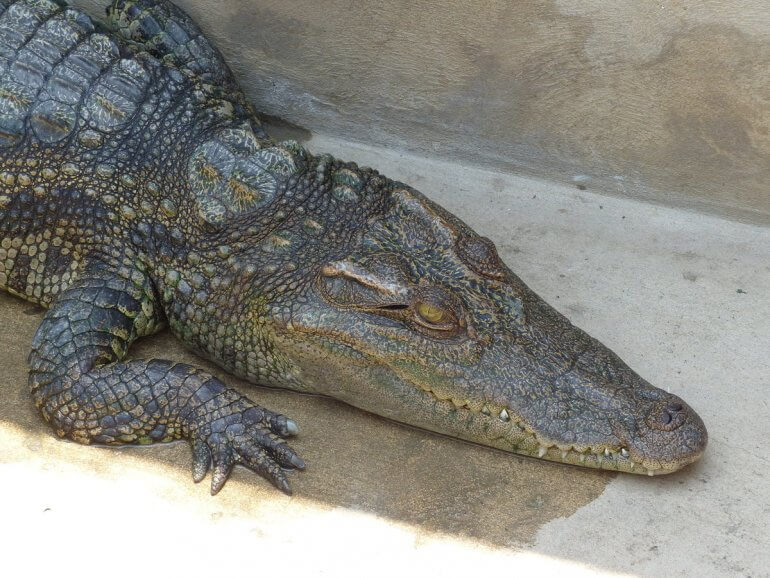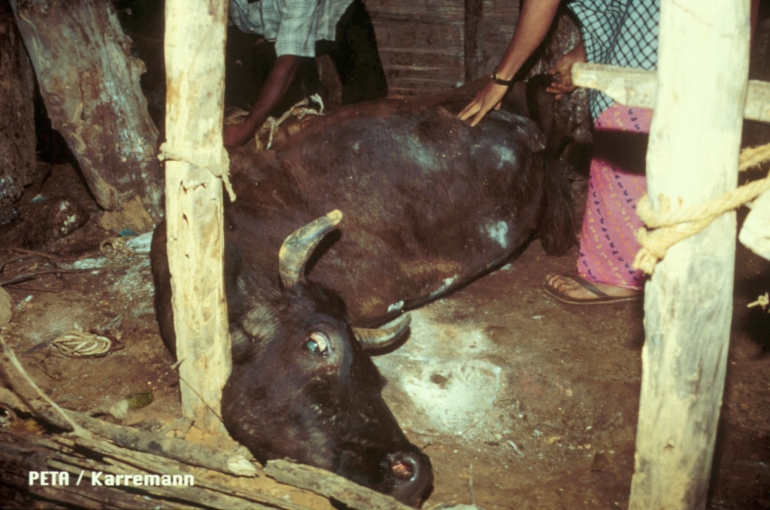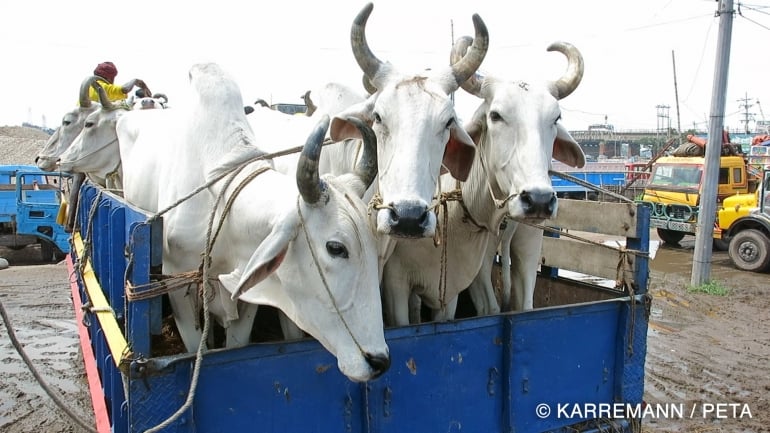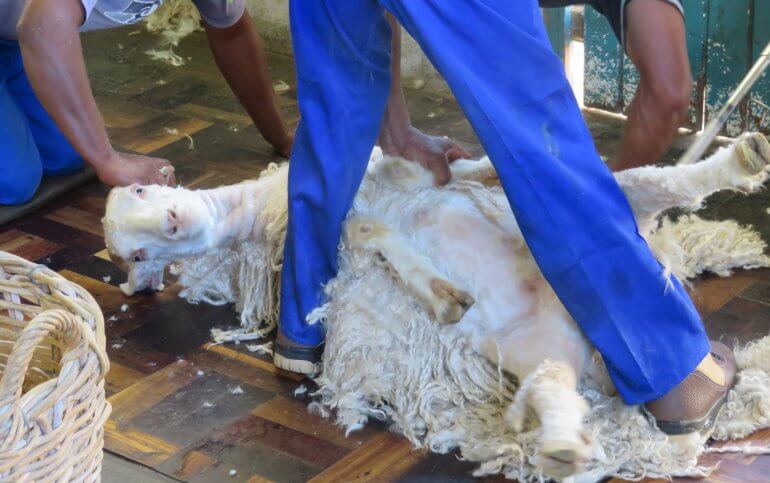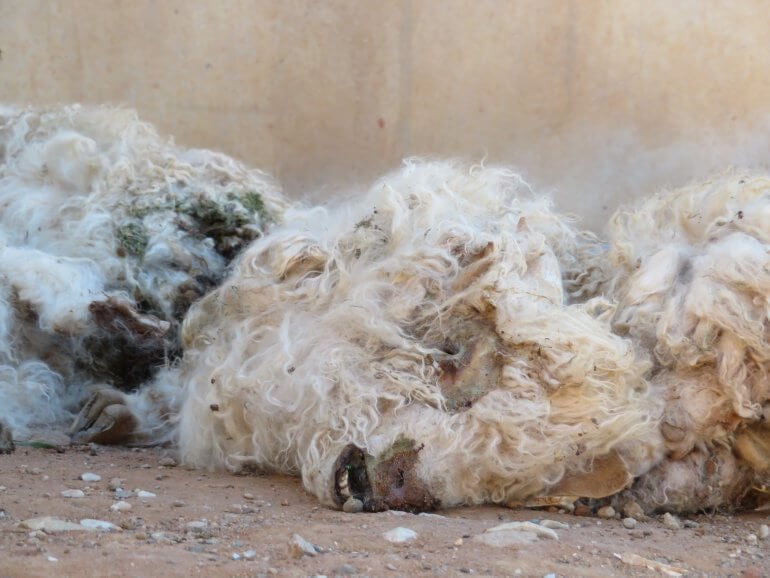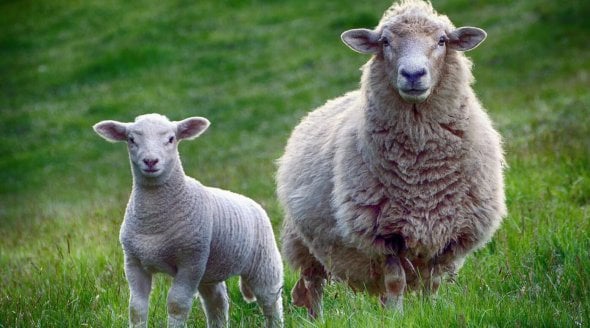19 Images of Animals Used for Clothing That You Need to See This London Fashion Week
If a picture is worth a thousand words, then the photos below speak volumes about the cruelty to animals that takes place in the name of fashion. Sadly, many people still wear animal-derived materials without realising that there’s suffering in every thread. These images alone should motivate people to wear their own skin and no one else’s:
-
Cashmere
Workers typically comb or shear goats for cashmere once a year, in the spring moulting season in April and May. According to one farmer, shearing is “very stressful” to the animals and robs them of natural insulation, leaving them vulnerable to low temperatures and illness.
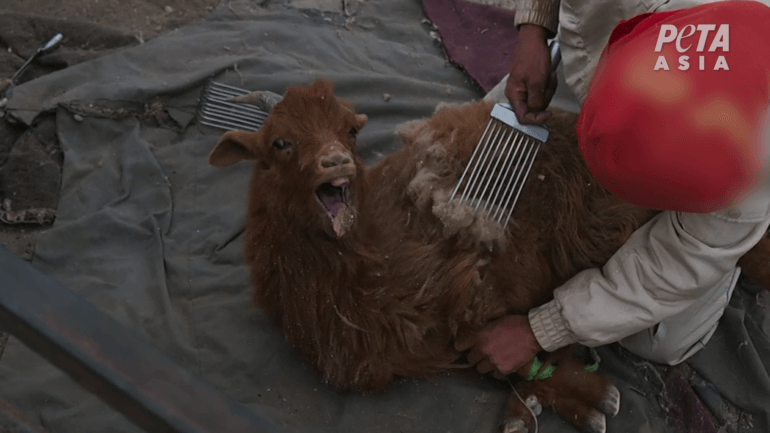
A recent PETA Asia investigation into the cashmere industry in China and Mongolia revealed extreme cruelty to cashmere goats. The animals screamed in pain and fear as workers held them down and stepped on them, bending their legs into unnatural positions and tearing out their hair with sharp metal combs.
Goats left with bloody cuts from the hair-removal process received no pain relief or veterinary care. One worker simply poured rice wine onto an animal’s wound.
In Mongolia, workers were seen dragging goats by one leg onto the abattoir floor before slitting their throats in full view of other goats. They were left to bleed out on the filthy kill floor, and some were seen still moving a full two minutes later.
-
Wool
When lambs are just a few weeks old, their ears are hole-punched, their tails are cut off, and males are castrated. Farmers use knives, hot irons, or tight clamps to sever parts of the animals’ bodies, often without painkillers.
Shearers are generally paid by volume, not by the hour, which encourages them to work as quickly as possible, leading to rough handling and frequent injuries to the animals.In nature, sheep grow only the amount of wool that they need to keep warm, and they naturally shed some of their fleece each year. Only sheep who have been selectively bred by the wool industry to grow unnaturally heavy fleeces suffer if they’re not shorn.
-
Fur
The fur industry has long been a byword for cruelty, killing millions of animals a year in horrific ways in order to profit from their skins.
Row upon row of cages stacked on top of each other in foul-smelling sheds that resound with the screams of distressed animals – this is a fur farm.More than 85 per cent of the fur sold today comes from such facilities, where minks, foxes, and other animals are locked up for their entire lives before being killed for their skins.
The methods used to kill animals on fur farms include vaginal or anal electrocution, gassing, and poisoning. All are gruesome, painful, and terrifying for the animals. -
Angora
Angora rabbits are typically kept inside small, filthy, bare cages and face the ordeal of “live plucking” up to four times a year. During this process, they’re often physically restrained as workers yank the hair out of their sensitive skin, leaving only the fur on their heads.
As rabbits produce a low yield of fur and longer hairs are more valuable, live plucking is rife in the industry and is the most common method of obtaining angora.
Even if rabbits are shorn for their fur rather than plucked, they still face a lonely life inside a small, barren cage and will be slaughtered far short of their natural life expectancy.
-
Exotic Skins
Animals exploited for exotic skins may be poached from the wild or raised on squalid farms and killed in the most gruesome and painful ways before being imported to Europe and used by “luxury” brands.
Reptiles, just like mammals, are sensitive to pain, yet they’re frequently mutilated without any prior stunning or pain relief.
Many of the millions of reptiles whose skins are exported from South East Asia each year belong to endangered species, whose numbers are drastically dwindling in the wild.
-
Leather
Before being turned into belts and bags, many animals used for leather endure all the horrors of factory farming – including intensive confinement inside filthy cages or pens, castration without pain relief, chronic infections and disease caused by extreme crowding, and a terrifying trip to the abattoir.
More than 1 billion animals are killed worldwide for the leather trade every single year, from cows and calves to horses, lambs, goats, and pigs.
In China’s leather trade, an estimated 2 million cats and dogs are killed each year for their skins.
-
Mohair
Shearing is extremely stressful to goats, who are prey animals and therefore terrified of being pinned down, vulnerable, and completely defenceless. Goat kids who are being shorn for the first time sometimes cry out in fear.
Farmers in South Africa, the world’s leading mohair producer, have admitted that after shearing, many goats – up to 80 per cent on some farms – die from exposure to the cold wind and rain. Reportedly, 40,000 goats died from exposure across the country in one weekend.
Other goats die from injuries or thirst after getting stuck in thorns while looking for food in farmers’ fields. Workers have even been known to shear the rotting corpses of dead goats.
All animals shown above and others used and abused by the fashion industry – including for wool, angora, mohair, and cashmere – will eventually be slaughtered. The individuals you see here have most likely been killed already.
*****
Wondering how to find vegan clothing? It’s easy – check out our list of “PETA-Approved Vegan” companies, and make sure that you always check the label when shopping. Leave anything that contains animal-derived materials on the shelf.
For more ways to help animals used for clothing , check out our action page:

